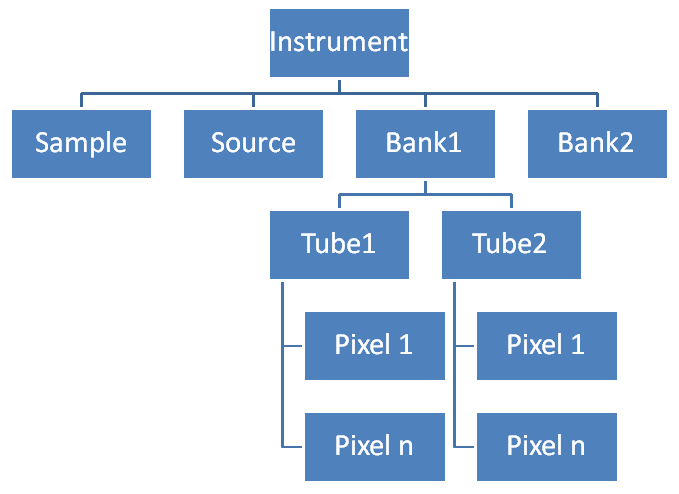Geometry of Position¶
What is it?¶
In Mantid we need to be able to define the position and orientation of every component within an instrument.
What is a component?¶
A component is an abstract concept that is anything that we want to define a position for, it could be a detector pixel, a whole detector bank, a sample position or the whole instrument itself. For each component we store:
A link to it’s parent component.
Position co-ordinates as a 3D Vector, internally these store the location in cartesian co-ordinates in metres, but can also be set in spherical co-ordinates. This position is the relative position compared to it’s parent.
Orientation as a quaternion. The orientation is applied after any position adjustment relative to the parent.
Subtypes of Component¶
Object Component¶
An object component is a component that has a shape. Shapes can contain a lot more information to properly define them, and therefore take more memory. Where an instrument contains a lot of instances of the same shape Mantid shares one instance of the object(shape) across all of the object components that need it.
Component Assembly¶
This component that is a logical collection of several smaller components, an example of this is a bank of detector pixels. The whole instrument itself is a Component Assembly which contains all of the other top level components in the Instrument tree.
Instrument Tree¶
 Most instruments in Mantid are defined using
a tree structure allowing the top level structure objects to be reused
if they are repeated in an instrument. This is an example of a
simplified instrument tree, the lines show the links between the parent
and child relationships of the components. Full details on how to define
an instrument can be found here.
Most instruments in Mantid are defined using
a tree structure allowing the top level structure objects to be reused
if they are repeated in an instrument. This is an example of a
simplified instrument tree, the lines show the links between the parent
and child relationships of the components. Full details on how to define
an instrument can be found here.
Category: Concepts